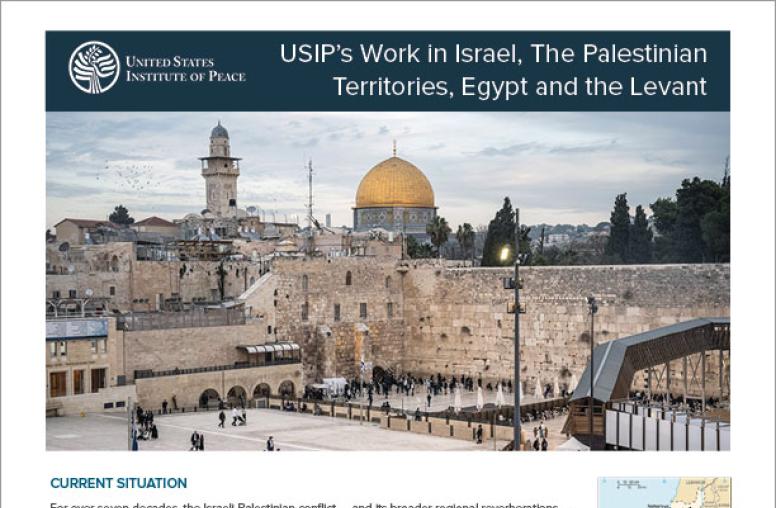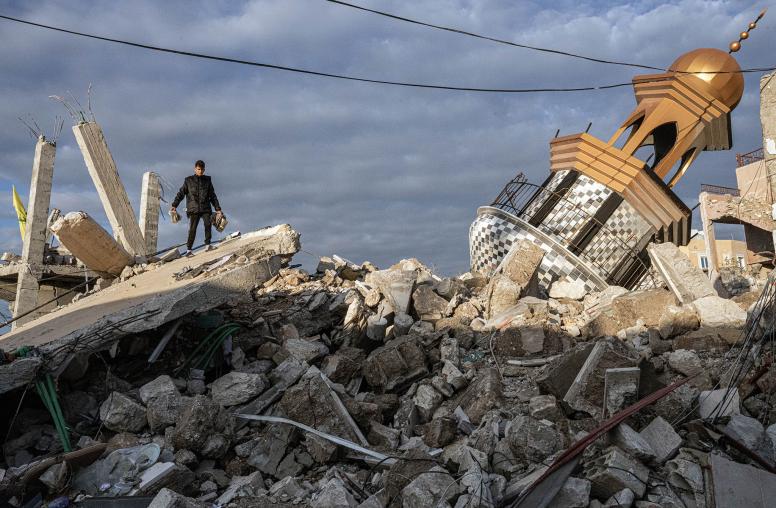President Obama’s Speech an “Evolution” for U.S. Policy, Says USIP Expert
President Barack Obama’s May 19 speech presents an important evolution rather than a decisive break with U.S. Middle East policy, particularly as it regards the crucial question of democratic reform in the Middle East, says USIP expert Dan Brumberg.
May 20, 2011
President Barack Obama’s May 19 speech presents an important evolution rather than a decisive break with U.S. Middle East policy, particularly as it regards the crucial question of democratic reform in the Middle East. Clearly, the administration—and President Obama in particular-- sees the region’s ongoing struggles as an “historic opportunity” to show, as he put it, “that America values the dignity of the street vendor in Tunisia more than the raw power of the dictator.”
Still, if these moving words signaled an enhanced effort by the administration to demonstrate that “America’s interests are essential to people’s hopes” the most notable thing about President Obama’s speech was way it carefully delineated the multiple agendas that the U.S. has --and indeed must-- pursue in the Middle East. In that spirit while asserting that the U.S. “can—and will, speak for a set of core principles,” President Obama also acknowledged that “there will be times when our term terms interests do not align with our long term vision of the region.”
This recognition of the continued tensions in U.S. foreign policy was not only remarkable for its frankness, but for its gritty practicality. The capacity to align power and principle will necessarily vary according to the particular challenges presented in the diverse states of Middle East. Clearly, when it comes to Syria, Libya, Yemen and Iran, the administration has decided that is in U.S. interest to make full-fledged democratic change the number one goal. But on Saudi Arabia and Bahrain, the president hedged. He did not even mention the first, and as for the second, he emphasized the commitment of the U.S. to Bahrain’s security, while effectively chastising its leaders for suggesting that they could have a “real dialogue when parts of the peaceful opposition are in jail.”
The ensuing focus on economic issues further underscored the administration’s multidimensional grasp of many vital interests and issues at stake in the Middle East. Having previously spurned any notion of a “strategy based solely” on either filling an empty stomach” or helping “someone to speak their mind,” President Obama went on to assert that the “tipping point for so many people is the more constant concern of putting food on the table. Thus the urgent need to address escalating economic challenges, not merely through the familiar mechanisms of enhanced assistance, but more ambitiously, by pursuing policies focusing on trade and investment.
If what followed was not quite a Marshall Plan, the president’s proposals for debt relief, loans for finance infrastructure and job creation, as well other measures, highlighted the administration’s desire to move Arab states beyond the crony-driven market reforms of the last decade. As he put it, the “vision of a modern and prosperous economy,” should “create a powerful force for reform in the Middle East and North Africa.
Lastly, and certainly not least, President Obama addressed what he called the other “cornerstone” of U.S. policy in the region, namely the pursuit of Palestinian-Israeli peace. While much of the language was not new, his call for a peace agreement “based on the 1967 lines with mutually agreed swaps,” as well as his call for Israel to “act boldly” could suggest a renewed U.S. effort to encourage Palestinian and Israeli leaders to make real progress.
Translating this complex blueprint into effective policies will be the administration’s greatest challenge. Its effort to balance diverse and at times competing goals is admirable, but it will also elicit efforts by a myriad of parties to selectively interpret the president’s vision, with a view to misrepresenting or even subverting it. To thwart such efforts, the president and his foreign policy team will have to muster considerable political will and determination, both at home and abroad.
Explore Further
- Eye on the Middle East and North Africa: Experts from the U.S. Institute of Peace (USIP) are closely following developments throughout the Middle East and North Africa. In a series of reports and interviews, they cover a wide range of issues.
- U.S. Policy and the Arab World
On the Issues by Dan Brumberg | May 2, 2011



